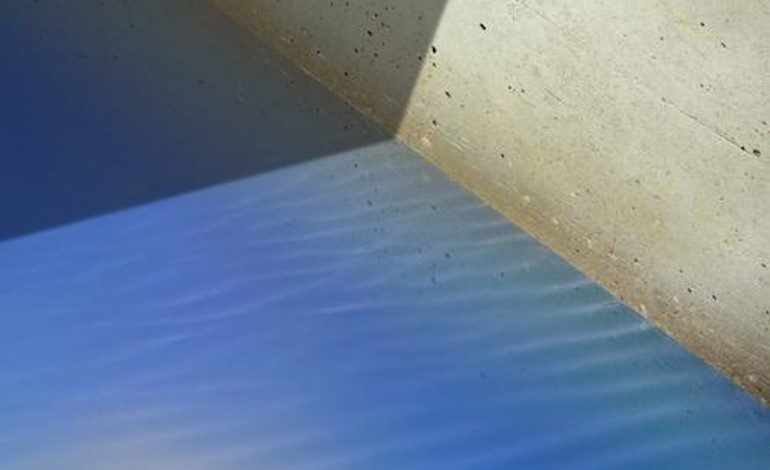

Artfully Layered, Semi-Organic Experimental
Earlier this year in October, Andrew Bird released the second installment, Echolations: River, of the five-part series that started with Echolocations: Canyon. While all installments of Echolocations will be instrumental, Bird has not shied away from singing on his records, contributing his voice to songs like “Pulaski at Night” or LPs like Swimming at Night with Bowl of Fire. He also showcases his abilities with the guitar, glockenspiel, and whistling on the folksy Armchair Apocrypha and on the baroque-pop of Noble Beast. However, the standout feature of most, if not all of Bird’s records and releases showcase his skill and experimentalism on the violin, a talent he so expertly utilizes in a way unlike his classical contemporaries.
On Echolations: River, Bird utilizes nature and an awareness of the spatial relations it has with sound to record and compose this record. He explains, “I composed this record standing in the river beneath the old Glendale/Hyperion Bridges,” where he “[sent] out sound waves with violin, voice, whistles, and claps, wait[ed] to hear what notes tell me the most about where I [was] and [built] compositions from there.”
As “The Cormorants” opened up the album with gentle, lo-fi violin strokes and soft sounds of strings being plucked, the peaceful stream of water in the background could be heard, adding a thin layer atop the minimalism of the plucked strings. The song is whimsical yet slightly solemn and flows beautifully and seamlessly into the next song as if the water had transported listeners there. On “Eclipses,” the melody brightens up ever so slightly, becoming more and more upbeat as Bird layers the contrast between the high-pitched and low-pitched strings. Suddenly, beautiful violin trills and riffs jolt into focus. Though it sounds abstract, the legato and passionate violin bowing dramatically takes center stage. With the slower and deeper strokes in the background, as well as the hypnotically repetitive electric guitar plucks and the sound of marching in the background, the erratic track stands out not only in its beauty but also in its ability to unsettle and disorient its listeners.
Long tracks on instrumental projects are difficult to pull off. They often become tedious to listen to as their melodies and instruments start to sound all too familiar, or so overtly complex that it is undiscernible what the composer or artist even intended. Bird does not fall victim to these trappings of instrumental music. Though he uses nothing but voice and body, a few string instruments and the omnipresent sound of water, his compositions never feel like they aren’t novel on the many tracks that run well over 5 minutes. On “Gypsy Moth,” the body of water that sounded quiet, yet close now sounds massive, but distant, perhaps by his experimentation with where he stood under the Hyperion Bridge while he recorded it. The violin is still solemn and a little gritty, but much faster than it was on previous tracks. It is layered under a simple melody by another violin, eventually becoming dense and sensually overwhelming in a hypnotizing way. He continues to layer another piercing violin on top, which is slowly overtaken by a sweeping and harmonious low-pitched violin. It blends everything together and fades out little by little until all that is audible is the sound of the water once more. Bird’s longer tracks are artfully layered in a manner that allows them to feel almost chaotic and unpredictable yet controlled all the same.
The beauty of Echolocations: River is not one-dimensional. Its solemn representations of nature and what has become of it, especially in “Black-Crowned Night-Heron” and “Down Under the Hyperion Bridge,” are chilling and ominous. The loudness of the water in “Black-Crowned Night-Heron,” paired with the whining violins, evoke a sense of suffering from our planet that is increasingly forced into artificiality. Once the quiet screeches of the fleeting reedy wood-wind shows up, the track slowly fades into an uncomfortable, digitized buzz. Similarly on “Down Under the Hyperion Bridge,” the quiet, minor-key whistling skips atop the water in the background, echoing through. Many violins come in afterward, creating and layering similar but slightly unique melodies into a mysterious lullaby. The beat of the plucked strings shifts into more cheerful tones as the melody becomes higher-pitched and faster. However, by the second half of the song, a slower, quieter melody emerges, paired with the extremely high notes of Bird’s whistling. Though not exactly as upsetting as “Black-Crowned Night-Heron,” the switch from joviality to reservation seems to mark a pained maturity that Bird conveys with masterful technique and creativity.
The album closes with “The Green Heron,” which seemingly fuses digital distortion with the acoustic violin he uses, all with a Latin-sounding flair. Bird even reminds us of a melody he used earlier in the tracklist, suggesting a cyclical nature to the album. He fades out his instrumentals and ends the album without much climax, just as peacefully as it began. Even more so than his technical abilities or his compositional creativity, the core of this album’s strengths is Andrew Bird’s understanding of the space around him and its relationship with the sounds he makes when inspired by it. It is what keeps the lengthy tracks from growing familiar, what gives his small arsenal of instruments unexpected range and what allows him to replicate nature’s own suffering because of man-made replacements into his music.
